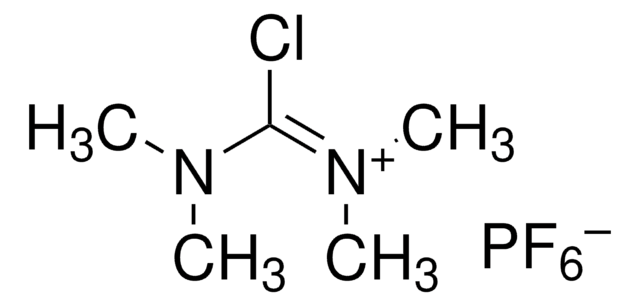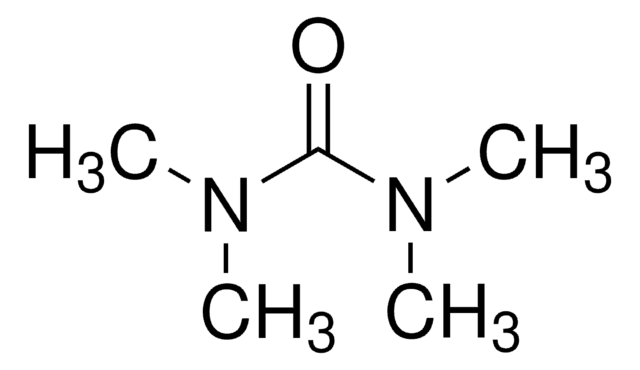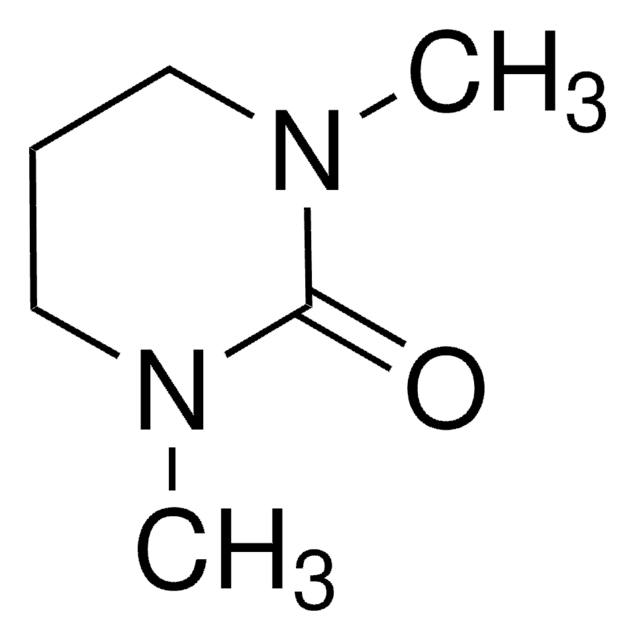T24503
Tetramethylurea
99%
Sinónimos:
1,1,3,3-Tetramethylurea, TMU
About This Item
Productos recomendados
Nivel de calidad
Ensayo
99%
índice de refracción
n20/D 1.451 (lit.)
bp
177 °C (lit.)
62-63 °C/12 mmHg (lit.)
mp
−1 °C (lit.)
densidad
0.968 g/mL at 20 °C (lit.)
cadena SMILES
CN(C)C(=O)N(C)C
InChI
1S/C5H12N2O/c1-6(2)5(8)7(3)4/h1-4H3
Clave InChI
AVQQQNCBBIEMEU-UHFFFAOYSA-N
Información sobre el gen
human ... EPHX2(2053)
mouse ... Ephx2(13850)
¿Está buscando productos similares? Visita Guía de comparación de productos
Categorías relacionadas
Aplicación
- Role of Tetramethylurea in Synthesizing Mesoporous Alumina: Tetramethylurea was used to synthesize mesoporous alumina via a hydrothermal method, affecting pore structure and thermal stability (Ghosh et al., 2014).
Palabra de señalización
Danger
Frases de peligro
Consejos de prudencia
Clasificaciones de peligro
Acute Tox. 4 Oral - Eye Dam. 1 - Repr. 1B - Skin Irrit. 2
Código de clase de almacenamiento
6.1C - Combustible acute toxic Cat.3 / toxic compounds or compounds which causing chronic effects
Clase de riesgo para el agua (WGK)
WGK 3
Punto de inflamabilidad (°F)
167.0 °F - closed cup
Punto de inflamabilidad (°C)
75 °C - closed cup
Equipo de protección personal
Eyeshields, Faceshields, Gloves, type ABEK (EN14387) respirator filter
Elija entre una de las versiones más recientes:
¿Ya tiene este producto?
Encuentre la documentación para los productos que ha comprado recientemente en la Biblioteca de documentos.
Los clientes también vieron
Nuestro equipo de científicos tiene experiencia en todas las áreas de investigación: Ciencias de la vida, Ciencia de los materiales, Síntesis química, Cromatografía, Analítica y muchas otras.
Póngase en contacto con el Servicio técnico










